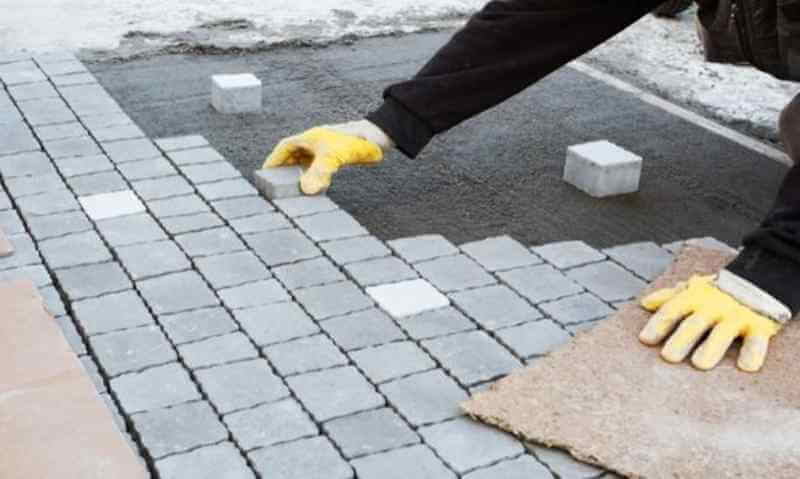When you think about construction, what comes to mind first? Perhaps towering skyscrapers or sprawling highways, right? But what about the pavement? Paving might not always steal the spotlight, but it plays a crucial role in our daily lives. From city sidewalks to driveways and garden paths, paving styles are everywhere, shaping both aesthetics and functionality.
Paving styles are very important because they provide structure, durability, and safety. Whether it’s directing traffic or enhancing the beauty of a garden, the right paving can make a world of difference. Think about how a well-paved driveway complements a beautiful home or how a smoothly paved sidewalk ensures a safe stroll through the neighborhood.
While anyone can pour concrete or lay bricks, achieving a polished and professional look requires expertise. Professional pavers not only have the skills to create durable surfaces but also the artistic touch to enhance your surroundings. They can help you choose the right materials, design patterns, and ensure proper installation that withstands the test of time and weather.
5 Major Types of Paving Styles
Paving styles may not always be the first thing on your mind when it comes to construction, but they play a significant role in both aesthetics and functionality. Let’s explore five major types of paving styles that you should know about:
1. Concrete Paving
Concrete paving is incredibly versatile, offering durability and the ability to be customized with various colors and textures. This is one of the best and most famous types of paving for any area.
It requires low maintenance, lasts a long time, and is suitable for driveways, patios, sidewalks, and more. Proper installation is key to preventing cracking over time, so hiring a professional is often recommended.
Concrete paving is a popular choice due to its durability and ability to blend into different settings seamlessly.
2. Brick Paving
Brick paving adds a classic and elegant touch to any space, enhancing its charm with a timeless appeal. It provides a traditional look, is easy to repair, and allows for intricate designs such as herringbone or basketweave patterns.
A stable base is essential, and occasional maintenance is needed to prevent weeds from growing between bricks.
Brick paving is favored for its aesthetic appeal and the ability to create unique patterns that add character to driveways, pathways, and garden areas.
3. Asphalt Paving
Asphalt paving is commonly used for roads, driveways, and parking lots, known for its smooth finish and quick installation. It’s cost-effective, durable, and provides a smooth driving surface that withstands heavy traffic.
Proper drainage is necessary to prevent water damage, and periodic sealing helps maintain its appearance and structural integrity. Asphalt paving is ideal for areas where a quick installation and a smooth, sturdy surface are required, making it a practical choice for many outdoor applications.
4. Flagstone Paving
Flagstone paving involves natural stone cut into flat, irregular shapes, creating a rustic and natural appearance. It offers a unique and natural look that blends well with both casual and formal settings, providing a durable surface.
Installation can be labor-intensive, requiring skilled handling of irregular shapes to ensure a stable and attractive finish.
Flagstone paving is sought after for its distinct appearance and the ability to create pathways, patios, and outdoor living spaces that harmonize with natural surroundings.
5. Interlocking Pavers
Interlocking pavers are concrete or brick units designed to fit together like puzzle pieces without mortar. They are flexible and durable and allow for easy replacement of individual units if necessary, making maintenance simpler.
A well-prepared base is crucial for stability, and proper installation is necessary to prevent shifting over time.
Interlocking pavers are versatile and can be used in various patterns and designs, offering both practicality and aesthetic appeal for driveways, walkways, and garden paths.
Key Takeaways
Material Matters
When selecting paving materials, consider factors such as how long they last, their style, and how much upkeep they need. You can choose from natural stones like Indian Sandstone, Limestone, Granite, and Slate, or opt for man-made Porcelain.
Natural Stone Benefits
Natural stone brings a unique look to your space with its different colors and textures. It’s tough, handles frost well, and can increase your property’s value. Each type of stone has its own strengths – Indian Sandstone offers variety, Limestone gives a consistent appearance, Slate adds a subtle charm, and Granite is super durable.
Porcelain Paving
Porcelain is a versatile option that needs little upkeep compared to natural stone. It doesn’t absorb water, making it easy to clean, and it comes in many styles. However, special installation techniques are required to get it just right.
Choose Wisely
Pick a paving material that fits your project’s needs. Think about how you’ll use the space, the look you want, how much upkeep you can manage, and the environmental impact of your choice. This way, you’ll make a decision that works well for your specific situation.
Final Wording
Whether planning a new driveway, revitalizing a garden path, or simply curious about options, understanding the different paving styles can help you make informed decisions. Remember, with professional help, your paving dreams can become a beautiful reality, adding value and charm to your property for years.

